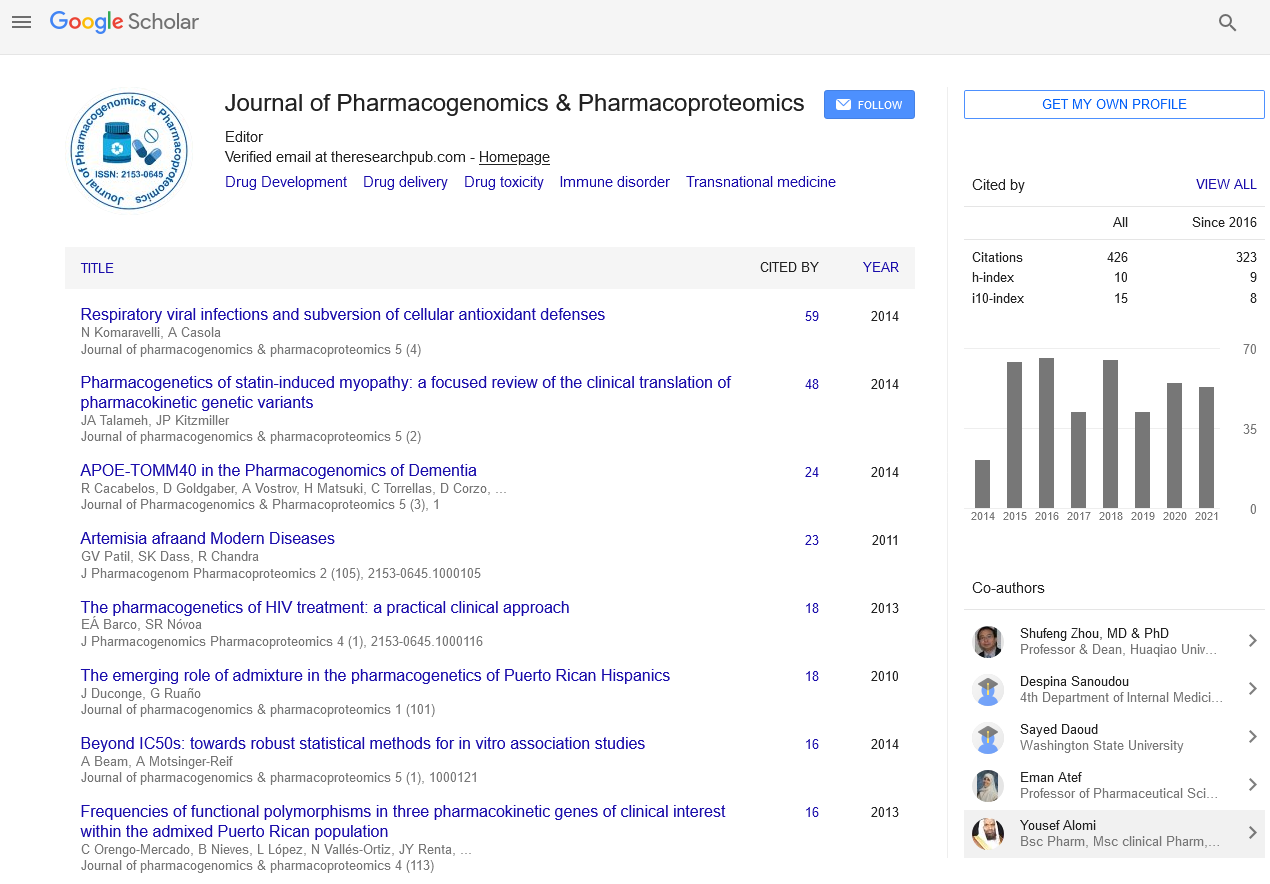Indexed In
- Open J Gate
- Genamics JournalSeek
- Academic Keys
- JournalTOCs
- ResearchBible
- Electronic Journals Library
- RefSeek
- Hamdard University
- EBSCO A-Z
- OCLC- WorldCat
- Proquest Summons
- SWB online catalog
- Virtual Library of Biology (vifabio)
- Publons
- MIAR
- Euro Pub
- Google Scholar
Useful Links
Share This Page
Journal Flyer

Open Access Journals
- Agri and Aquaculture
- Biochemistry
- Bioinformatics & Systems Biology
- Business & Management
- Chemistry
- Clinical Sciences
- Engineering
- Food & Nutrition
- General Science
- Genetics & Molecular Biology
- Immunology & Microbiology
- Medical Sciences
- Neuroscience & Psychology
- Nursing & Health Care
- Pharmaceutical Sciences
Abstract
Patterns of genetic diversity in Colombia for 38 indels used in human identification
Humberto Ossa
The current population of Colombia has a genetic heterogeneity resulting from different migrations from other continents and within the country. In addition, there are small groups in their territory that have remained isolated and therefore have a different genetic pool in relation to that of the neighbouring urban populations. This population stratification must be considered in forensic analysis, being more complex for markers with marked intercontinental differentiation. In this study, population differentiation in Colombian admixed, native, and Afro-descendant populations was evaluated for a group of 38 indels described for forensic use. Allelic frequencies and parameters of forensic relevance were determined in each of the groups defined based on population differentiation analyses. In addition to the differences found between population groups, the results show that the set of 38 indels analysed could be useful in studies of individual identification in Colombia. The exclusion power presented by this set of markers suggests the need for joint use with other markers, being able to complement the STRs in paternity cases. High levels of both power of discrimination and exclusion were found when complementing the 38 HID-indels with a second multiplex, for a total of 83 indels.
Published Date: 2021-07-08; Received Date: 2021-06-25


